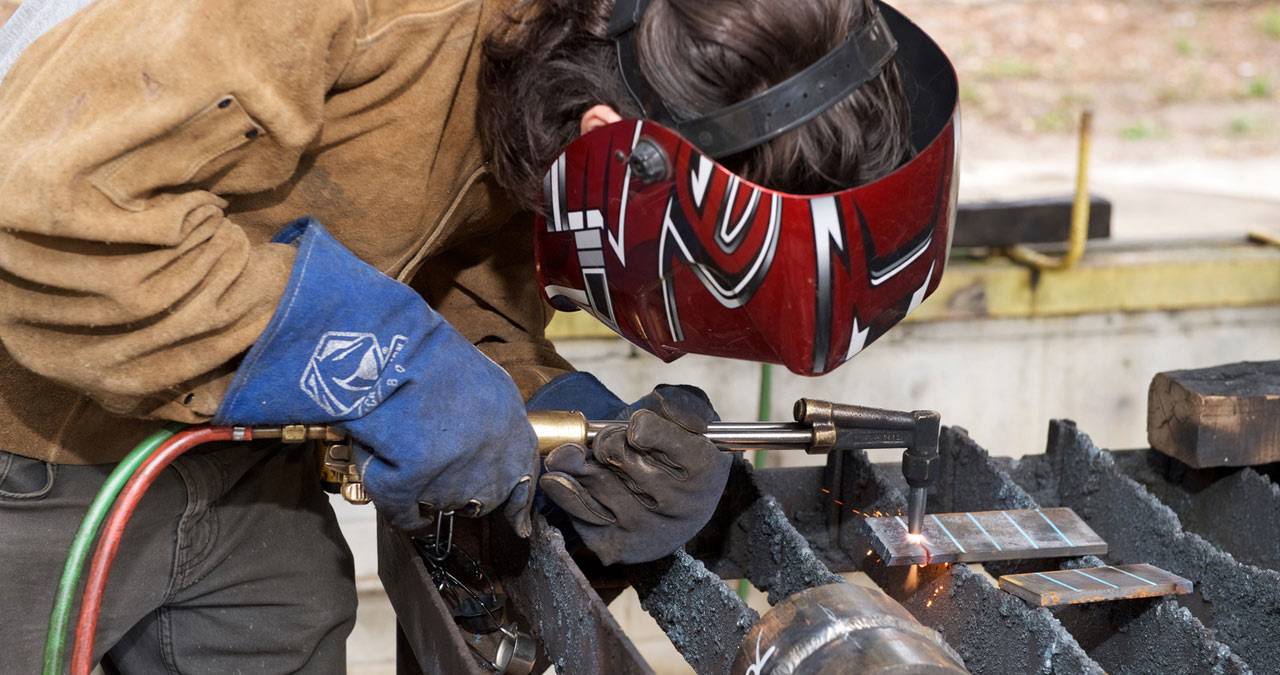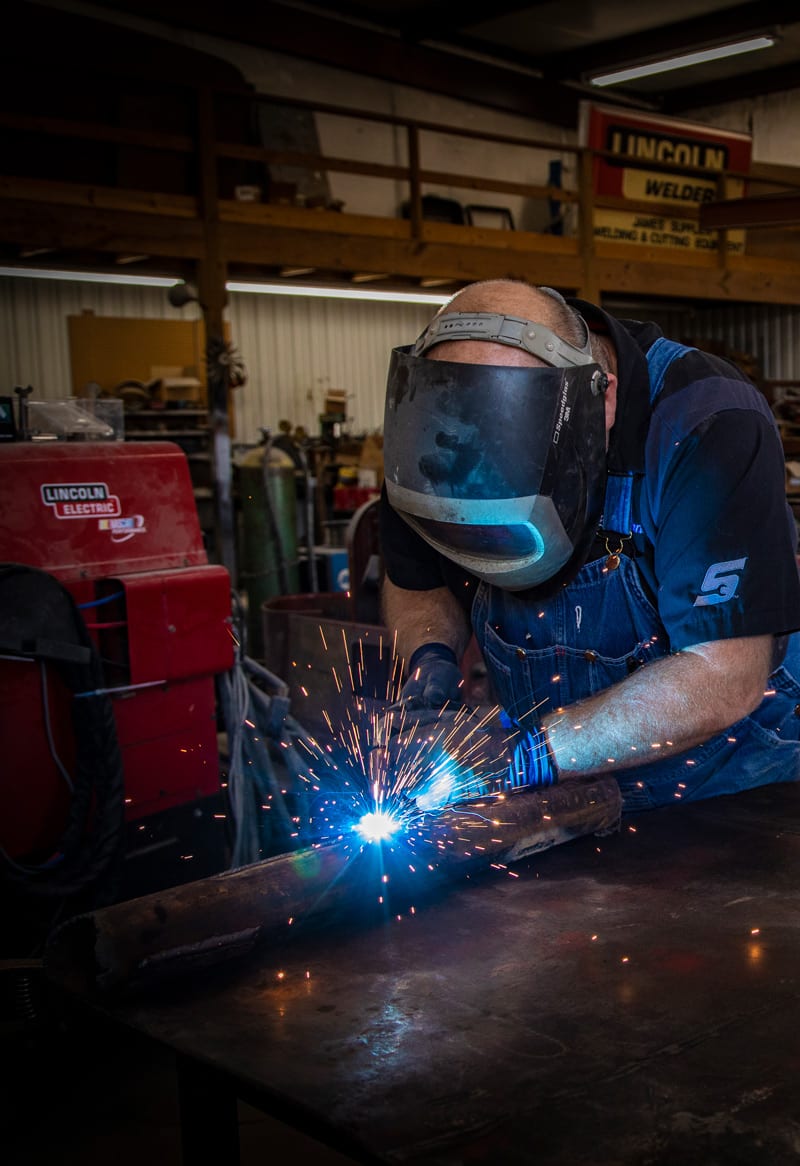Common Welding Repair Service Issues and How to Address Them Effectively
Welding fixings often run into an array of concerns that can endanger the integrity of the end product. Common issues include insufficient penetration, porosity, and misalignment, amongst others. Each flaw presents special challenges that need particular approaches for resolution. Recognizing these issues is vital for welders aiming to boost their abilities and outcomes. This conversation will explore these typical welding fixing issues and reliable approaches to address them.
Insufficient Penetration
Inadequate infiltration takes place when the weld steel fails to fully fuse with the base material, causing weak joints and prospective structural failings. This problem frequently comes from inadequate warm input, wrong electrode angle, or inappropriate welding speed. Welders may encounter inadequate infiltration due to a miscalculation of the necessary criteria for a details material density or kind. Additionally, contamination on the base product's surface can impede efficient bonding, aggravating the problem. To deal with poor penetration, welders must assure proper setups on their tools and maintain a clean job surface. Routine evaluation of welds is advised to determine any kind of deficiencies early, enabling for prompt corrections and the prevention of compromised structural integrity in bonded assemblies.
Porosity
Porosity is a common flaw in bonded joints that manifests as tiny gas bubbles trapped within the weld steel. This issue can compromise the honesty of the weld, resulting in lowered toughness and possible failure under stress and anxiety. Fabrication. Porosity normally develops from contamination, wetness, or inappropriate welding techniques, which allow gases to escape into the molten weld pool. To attend to porosity, welders need to assure proper surface prep work, maintain a clean workplace, and use appropriate welding parameters. In addition, selecting the best filler product and securing gas can minimize gas entrapment. Routine evaluation and screening of welds can aid recognize porosity early, guaranteeing prompt rehabilitative activities are taken, thus protecting the high quality and dependability of the bonded structure
Imbalance
Misalignment in welding can arise from various aspects, including improper setup and thermal expansion. Understanding the source is essential for efficient resolution. Several correction methods are offered to straighten components and ensure architectural stability.
Sources of Imbalance
Welding imbalance usually stems from a variety of underlying issues that can endanger architectural integrity. One main cause is inappropriate fit-up of components before welding, which can result in gaps and irregular surface areas. Variants in thermal growth throughout the welding process can likewise cause distortion, especially if the products being joined have different coefficients of expansion. Furthermore, insufficient fixturing and clamping might stop working to hold components firmly in location, causing activity throughout welding. Poorly kept tools, consisting of welding devices and tools, might present variances in the weld grain, additional adding to imbalance. Operator error, stemming from not enough training or experience, can additionally play a considerable duty in creating misaligned welds.

Correction Techniques Available
Dealing with misalignment efficiently requires a combination of corrective strategies tailored to the certain issues available. One common approach is making use of fixtures or jigs to hold elements in the appropriate setting throughout welding, making sure constant positioning. In addition, preheating the materials can help in reducing distortion and enhance fit-up. For significant imbalance, mechanical realignment methods, such as utilizing hydraulic jacks or clamps, can be employed to fix the setting before welding. Post-weld warm treatment may likewise be necessary to soothe stress and anxieties created by misalignment. Finally, mindful evaluation and adjustment throughout the configuration stage can prevent imbalance problems from ending up being substantial issues, advertising a smoother welding procedure and enhancing overall architectural honesty.
Distortion
Distortion is an usual challenge in welding that can arise from different variables, consisting of irregular cooling and heating. Recognizing the reasons for distortion is necessary for applying effective avoidance techniques. Resolving this concern not just improves architectural stability however additionally enhances the overall high quality of the weld.
Causes of Distortion
When based on the extreme heat of welding, materials often undergo adjustments that can cause distortion. This phenomenon primarily emerges from thermal development and contraction throughout the welding process. As the weld location warms up, the product expands; upon cooling, it gets, which can produce internal tensions. Furthermore, uneven home heating throughout a workpiece can exacerbate these stresses, resulting in warping or flexing. The kind of material likewise plays a significant function; metals with differing thermal conductivity and coefficients of expansion might respond in different ways, causing unpredictable distortions. Poor joint design and inadequate fixturing can contribute to misalignment during welding, increasing the likelihood of distortion. Recognizing these causes is crucial for reliable welding repair service and avoidance strategies.
Avoidance Techniques
Efficient avoidance methods for distortion during welding concentrate on regulating heat input and making sure correct joint style. Maintaining a consistent warm input aids to decrease thermal development and contraction, which can result in distortion. Making use of methods such as preheating the workpiece can also lower the temperature gradient, advertising consistent home heating. Additionally, selecting suitable joint styles, such as T-joints or lap joints, can boost stability and lower stress and anxiety focus. Executing proper fixturing to safeguard the work surfaces in position further aids in preserving placement during the welding procedure. Lastly, staggered welding sequences can distribute heat much more equally, avoiding localized distortion. By applying these approaches, welders can greatly lower the chance of distortion and enhance the overall high quality of their welds.
Splitting
Cracking is a typical issue come across in welding repairs, often resulting from various elements such as incorrect air conditioning rates, product choice, or inadequate joint prep work. The event of splits can significantly compromise the honesty of the weld, resulting in prospective failures throughout operation. To resolve this issue, welders Get the facts should initially examine the source, making sure that materials work and suitably picked for the particular application. Furthermore, controlling the cooling price during the welding procedure is vital; fast air conditioning can cause tension and lead to splitting. Proper joint layout and prep work additionally contribute to lessening the danger. Executing these methods can boost weld top quality and longevity, ultimately minimizing the likelihood of fracturing in ended up weldments.

Insufficient Combination
A considerable issue in welding repairs is incomplete blend, which occurs when the weld steel does not effectively bond with the base material or previous weld passes - Montana Mobile Welding and Repair Fabrication. This defect can cause weaknesses in the joint, potentially jeopardizing the integrity of the welded framework. Variables adding to insufficient fusion include insufficient warmth input, incorrect welding method, and contamination of the surfaces being signed up with. To resolve this issue properly, welders should assure correct pre-weld cleansing and surface area prep work, along with change their welding specifications to attain sufficient penetration and combination. Regular evaluation during the welding process can likewise help identify incomplete blend early, enabling prompt corrective actions to boost the general top quality of the weld
Overheating
While welding fixings can enhance structural honesty, overheating offers a considerable challenge that can result in product destruction. Extreme warmth during welding can alter the mechanical properties of metals, leading to decreased strength, boosted brittleness, and bending. This sensation is specifically crucial in high-stress applications where structural dependability is vital. Identifying overheating can entail aesthetic evaluations for discoloration or distortion, in addition to keeping track of temperature level throughout the welding procedure. To reduce the threats linked with getting too hot, welders ought to use ideal strategies, such as controlling heat input, readjusting travel rate, and utilizing ideal filler materials. Additionally, executing pre- and post-weld heat treatments can help recover product properties and enhance the total quality of the repair service, making sure long-lasting efficiency and safety.
Frequently Asked Inquiries
What Are the Common Indications of a Welding Problem?

Exactly How Can I Test My Welds for Quality?
To check welds for high quality, one can make use of aesthetic examinations, ultrasonic screening, and radiographic approaches. Each strategy ensures structural integrity, determines defects, and confirms adherence to specified standards, ultimately enhancing the integrity of the bonded joints.
What Safety and security Preventative Measures Should I Take While Welding?
When welding, one should focus on security by wearing appropriate personal protective tools, ensuring proper air flow, safeguarding combustible products away, maintaining a tidy workspace, and go recognizing environments to avoid crashes and injuries.
Can I Repair a Weld Without Renovating the Entire Joint?
Repairing a weld without redesigning the whole joint is feasible, depending upon the damages (Montana Mobile Welding and Repair Belgrade). Strategies such as grinding, adding filler material, or utilizing a welding procedure can efficiently address details problems while preserving the bordering framework
What Devices Are Essential for Efficient Welding Repair Works?
Essential devices for efficient welding repair services consist of a welding equipment, wire brush, grinder, protective equipment, clamps, and filler products. Each tool plays a crucial role in guaranteeing quality and safety and security during the repair process. Porosity typically arises from contamination, wetness, or improper welding methods, which permit gases to escape right into the molten weld swimming pool. Inadequately conserved devices, including welding devices and tools, may present variances in the weld grain, additional contributing to misalignment. When subjected to the extreme warmth of welding, materials commonly undergo adjustments that can lead to distortion. Splitting is a typical problem come across in welding repairs, frequently resulting from various aspects such as improper cooling prices, material selection, or inadequate joint preparation. A significant concern in welding repairs is incomplete fusion, which occurs when the weld metal does not effectively bond with the home base product or previous weld passes.